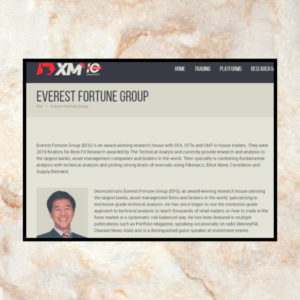- Principles of Elliott Wave Theory
- Motive and Corrective Waves
- Wave Structure and Degrees
- Fibonacci Ratios and Guidelines
The Wave Theory

- Developed by Ralph Nelson Elliott in the late 1920s
- He noticed repetitive patterns in the market which he attributed to the psychology of masses
- He divided these large patterns in smaller patterns which he called “Waves”
- Every transaction is both produced by meaningful information and produces meaningful information
- The wave principle is not primarily a forecasting tool; it is a detailed description of how markets behave
Motive Wave

- The motive wave is the first half a complete Elliott Wave cycle
- It advances in the direction of the trend of one larger degree and it is subdivided into 5 smaller waves
- Three of these waves, which are labeled 1, 3 and 5, are “impulse” or “actionary” waves
- These impulse waves are separated by two “diagonal” or “corrective” waves, labeled 2 and 4
Motive Wave Rules

- Wave 2 cannot retrace more than 100% of wave 1
- Wave 3 can never be the shortest of waves 1, 3 and 5
- Wave 4 can never overlap wave 1
- These rules are unbreakable
Corrective Wave

- The corrective wave is the second half a complete Elliott Wave cycle
- Corrective waves move against the trend of one larger degree
- The corrective wave is subdivided into 3 smaller waves denoted by the letters A, B and C
Basic Cycle Structure

- Elliott Wave pattern = Motive phase + Corrective phase
- A cycle is illustrated as a structure with a total of 8 waves
- The market repeated this 5-3 structure again and again – Once the cycle ends, it begins again
Repetitive 5-3 Structure

- Incorporated expanded waves make a more detailed general Elliot Wave structure
- 5 advancing waves make up Wave I
- 3 declining waves make up Wave II
- In waves 1 and 2 of wave I, the general 5-3 Elliott structure forms
- The market repeated this 5-3 structure again and again – once the cycle ends, it begins again
- Each wave and cycle can be part of bigger 5-3 structure
Elliott Wave Degree

- Degree is used to identify the position of a wave within the overall progress of the market
- Elliott acknowledged 9 degrees of waves from the Grand Super cycle to the Subminuette
- The precise degree is irrelevant to successful forecasting since the relative degree matters most
- To know a major advance is due is more important than its precise name
- Later events always clarify the degree…
Fibonacci & Elliott

- Elliott waves relate to one another according to Fibonacci ratios
- Fibonacci ratios are useful to measure the target of a wave’s move
- This can help traders determine good entry levels and profit targets

- Wave 2 = 61.8% retracement of wave 1
- Wave 3 = 161.8% or 261.8% extension of wave 1
- Wave 4 = 38.2% retracement of wave 3
Wave Alteration

- Wave 2 and wave 4 will alternate in shape or style
- If wave 2 is sharp, wave 4 will be sideways
- If wave 2 is sideways, wave 4 will be sharp
- This guideline is useful for potentially projecting the end of wave 4
Wave Equality

- In a 5 wave sequence, 2 of the motive sub-waves will tend toward equality
- Wave 5 will approximately equal wave 1 in price
- This guideline is useful for potentially projecting the end of wave 5
Momentum Divergence

- When 5 breaks beyond the span of wave 3 momentum oscillators show divergence
- As the price breaks to print a new high or low, oscillators fail to do the same and diverge
- This guideline is useful for potentially projecting the beginning of a corrective wave
Depth of Corrective Wave

- The market will often corrects to the territory of wave 4 of lesser degree
- The corrective wave will not always reach the bottom of the previous 4th wave
- This is a good place for prices to find support or resistance before the trend continues
The Theory Limitations

- Two features of this theory can create some confusion regarding wave-count:
- Extensions of the impulse waves
- Alternating types of corrective waves
Wave Extensions

- Most of the time, impulse waves will display an “extension” to their normal pattern
- One of the impulse waves in the motive phase will be an elongated impulse with multiple subdivisions
- Extensions occur in wave 1, 3, or 5, however, wave 3 is the most common wave to extend
- Subdivisions of the extended wave may look similar to the other 4 waves resulting in a wave-count of 9
- Since the extended wave is originally an impulse, extensions can also occur within extensions
Types of Correction - Zigzag

- The zigzag is a three-wave corrective structure labeled A-B-C with a sub-wave sequence of 5-3-5
- Waves A and C are motive waves, while wave B is corrective
- It is a sharp style of correction that usually shows up in wave 2 of the impulse wave
Types of Corrections - Flat

- The flat is also three-wave corrective structure labeled A-B-C but with a sub-wave sequence of 3-3-5
- Waves A and B are corrective waves, while wave C is a motive wave
- It develops in a sideways direction and usually shows up in wave 4 of the impulse wave
Types of Corrections - Expanded Flat

- Not all flat corrections look perfect like this
- A more common type of flat is the expanded flat
- Wave B ends above the start of wave A and wave C ends below the start of wave B
Types of Corrections - Triangle

- The triangle is a five-wave corrective structure labeled A-B-C-D-E with a sub-wave sequence of 3-3-3-3-3
- Its sub-waves form patterns of 3’s but sometimes may take the form of complex combinations
- Triangles may take various forms and usually shows up in wave 4 of the impulse wave








